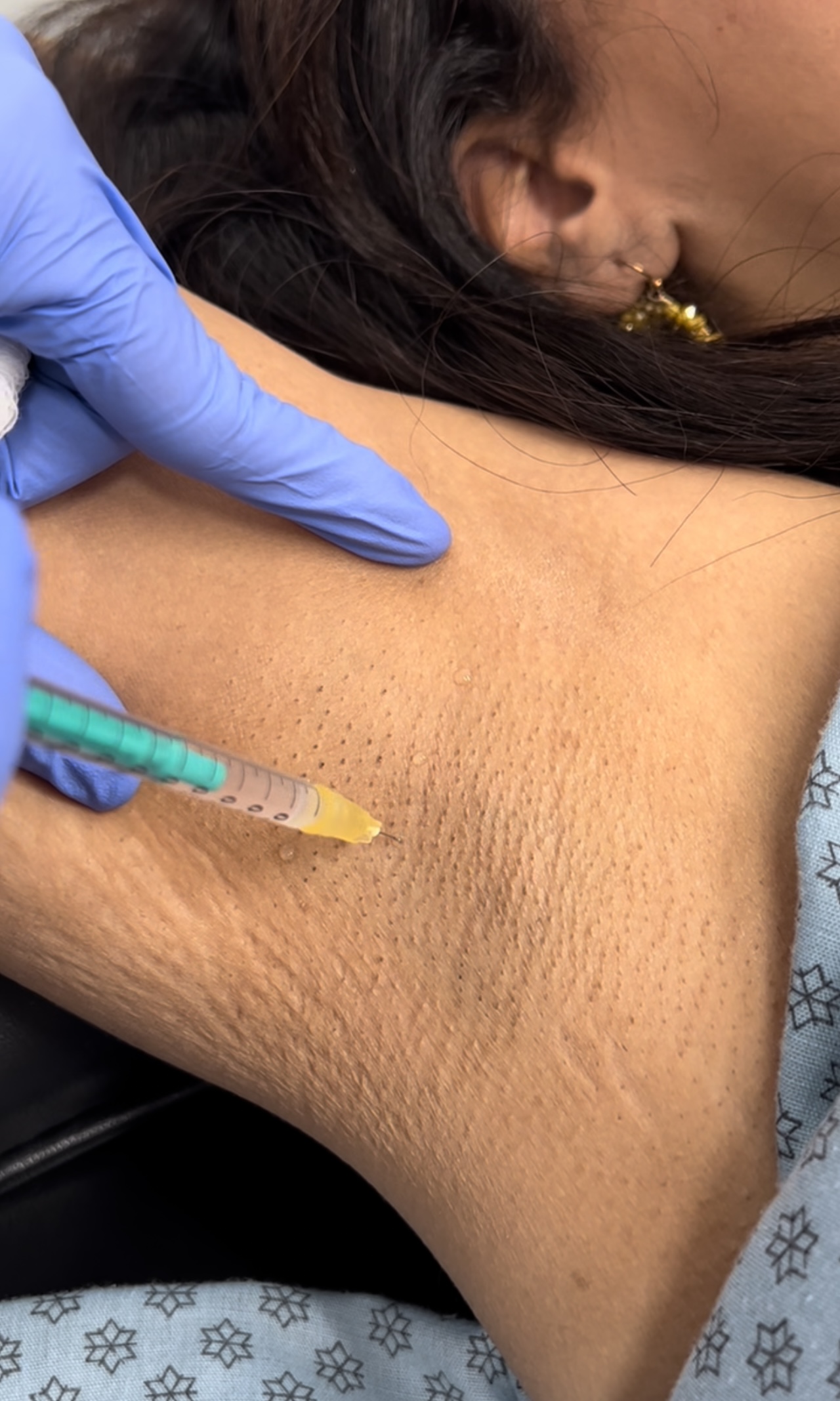Excessive sweating is medically referred to as hyperhidrosis. Hyperhidrosis typically occurs on the underarms, hands, feet, and face. It can be an embarrassing problem that significantly affects one’s quality of life.
What Is It?
Generally, hyperhidrosis is a benign condition and is not medically significant. In some situations, however, it can be associated with an underlying medical conditions such as nerve disorders, thyroid disease, diabetes, infections, and sometimes cancers. Hyperhidrosis may also result from certain medications that individuals are taking for other medical conditions. Cases of hyperhidrosis that are long-standing and have persisted since childhood are very often benign. Acute or new onset cases that occur suddenly may also be benign but should be evaluated for a possible underlying medical association.
How to Treat Excessive Sweating
Treatment options for hyperhidrosis range from the use of topical and/or oral agents to more invasive treatments, including surgery. The following is a list of treatment options that are currently available, ranging from least to most invasive:
- Topical solutions such as aluminum chloride are available in prescription strength.
- Oral medications can be used to halt sweat production from the sweat glands. Side effects, including blurry vision, dry mouth, and urinary retention, limit the use of these medications.
- Iontopheresis is a safe treatment in which an electric current is passed through the sweat glands and somehow suppresses their activity. The mechanism of action has yet to be fully understood. Tareen Dermatology typically recommends DermaDry as an iontophoresis device. In the United States, this prescription device requires a medical appointment.
- Botox or Dysport injections are a safe and effective treatment to diminish sweat production from the sweat glands, and the effects can last 6-9 months. Of note, Dr. Tareen does not accept insurance for this procedure because of the varying intricacies of every individual’s insurance plan. The charge for 100 Botox or 300 units of Dysport is $1,295 per vial and may require several vials depending on the treated area.
- Liposuction and laser treatments can be used to injure the sweat glands under the skin and diminish their activity.
- Surgical cutting of the nerve that activates the sweat glands. This, however, is an invasive procedure with potential significant side effects and is reserved only for extreme cases.
Schedule an appointment to address excessive sweating today!
FAQS
Recent studies have shown that hyperhidrosis is strongly associated with depression and anxiety. Anxiety was seen in 21.2% of patients who suffer from hyperhidrosis, compared to 7.5% of people who did not suffer from excessive sweating. Depression was seen in 27.2% of patients with hyperhidrosis compared to 9.7% of patients without hyperhidrosis.
At Tareen Dermatology we will strive to manage not only our patients’ excessive sweating, but also the anxiety and depression associated with it. Please contact our Roseville or Faribault dermatology offices if you need help with the troublesome condition.
